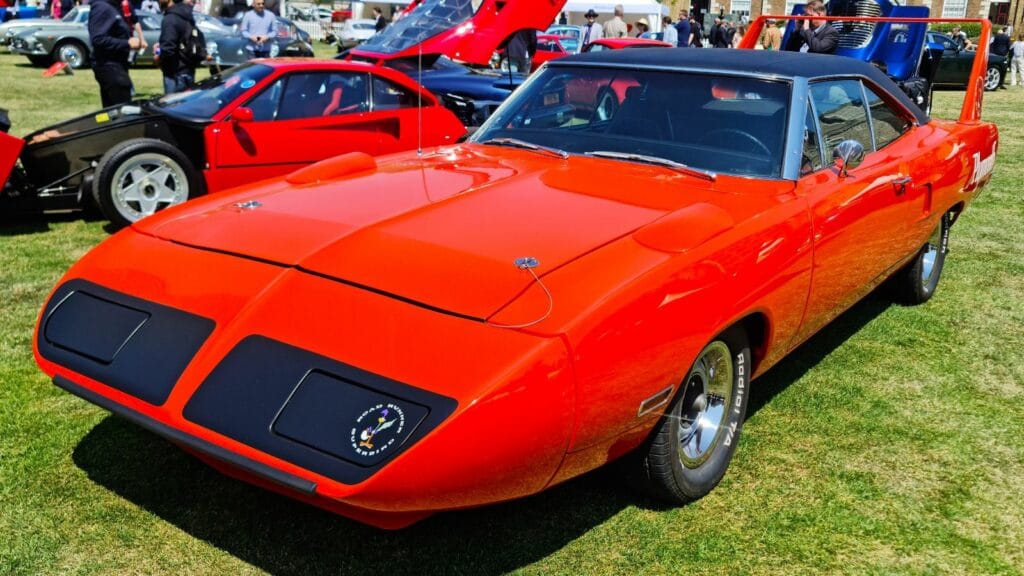Muscle cars are often painted with a single brush big V8s, quarter mile domination, and not much else. While it’s true that many were designed with drag strips and stoplight showdowns in mind, some of these American brutes went on to prove their worth in far more serious arenas. From the high banks of NASCAR to the technical road courses of the Trans Am series and the straight line battleground of NHRA, muscle cars showed that they were not just loud boulevard cruisers but championship winners. Here are 20 muscle cars that carried their muscle onto the race track and wrote themselves into motorsport history.
Ford Mustang Boss 302
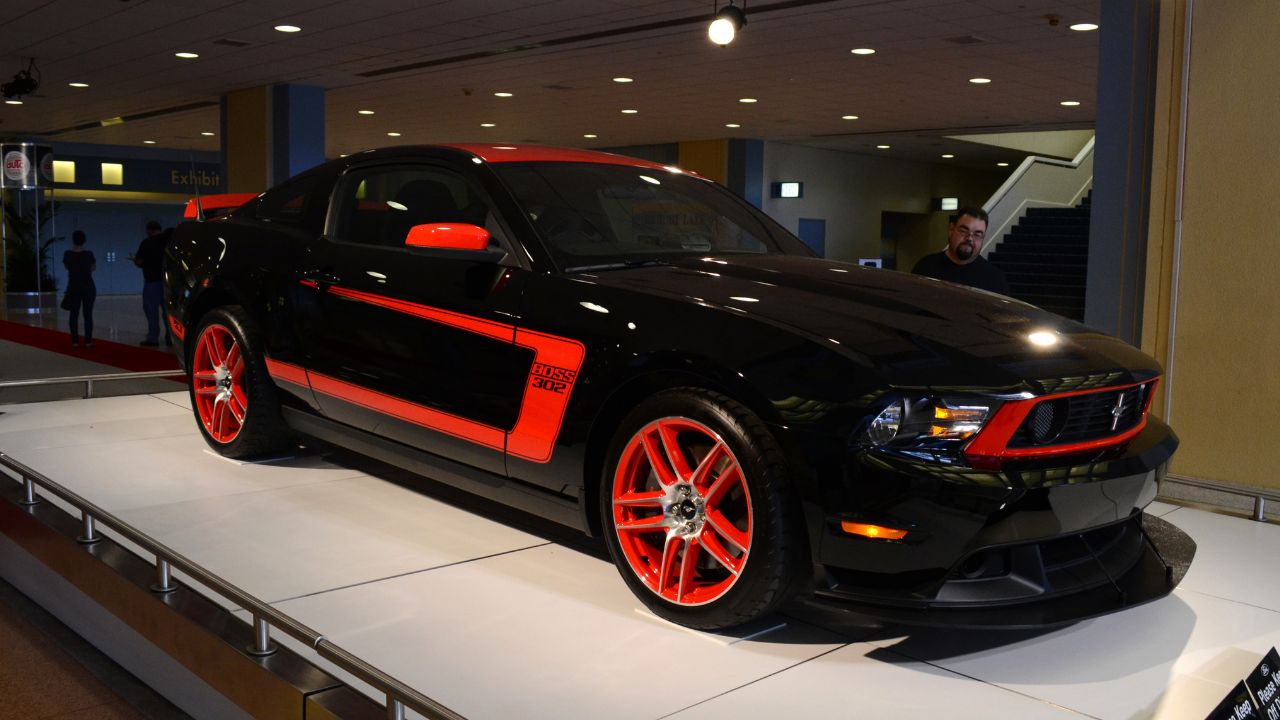
The Boss 302 Mustang was born to race, designed specifically to challenge Chevrolet in the Trans Am series. With a high revving small block V8, improved suspension geometry, and track tuned handling, it was far more than a street toy. In 1970 it captured the Trans Am title with Parnelli Jones behind the wheel, cementing Ford’s place in the series. In Canada, enthusiasts followed the Boss’s exploits through magazines and cheered its victories as proof that the Mustang was more than a pretty face.
Chevrolet Camaro Z/28
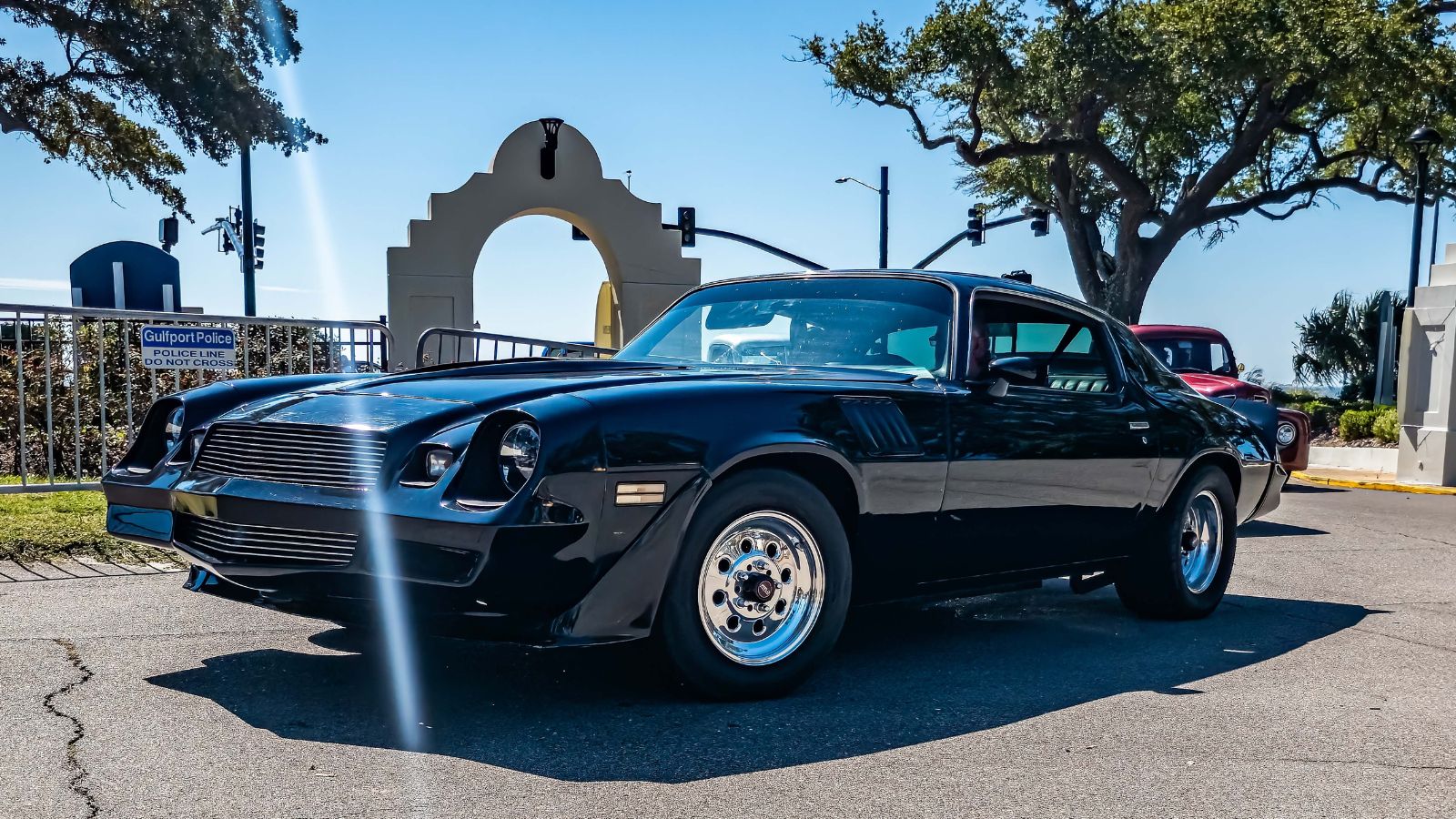
The Camaro Z/28 was Chevrolet’s counterpunch to the Boss 302. With its own high revving 302 cubic inch V8 and a chassis tuned by racing legends, the Z/28 became a dominant force in Trans Am. In the late 1960s, Mark Donohue and Penske Racing used the Z/28 to devastating effect, stacking up wins and putting Chevrolet firmly in the winner’s circle. The car proved that the Camaro could match the Mustang punch for punch, and its racing pedigree still fuels Camaro loyalty today.
Dodge Charger Daytona
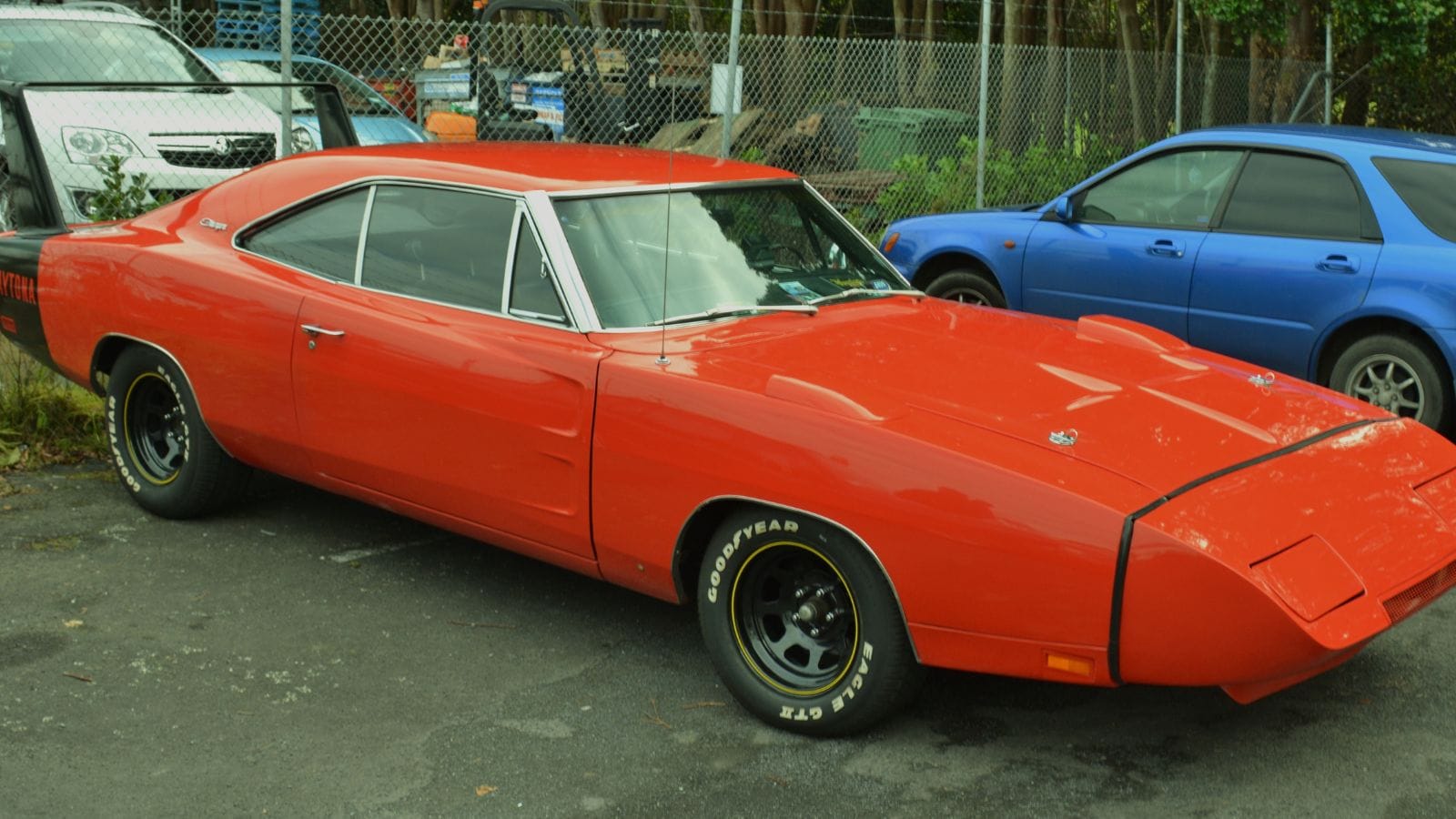
The Charger Daytona was a NASCAR missile, purpose built with a wind cheating nose cone and sky high wing. Introduced in 1969, it became the first NASCAR car to break 200 mph, a staggering achievement for the time. On oval tracks it destroyed the competition, leading to NASCAR eventually banning aero warriors like it. Drivers like Buddy Baker turned it into a record setter, and its legacy still echoes whenever NASCAR fans talk about the wild aero wars of the late 60s.
Plymouth Superbird
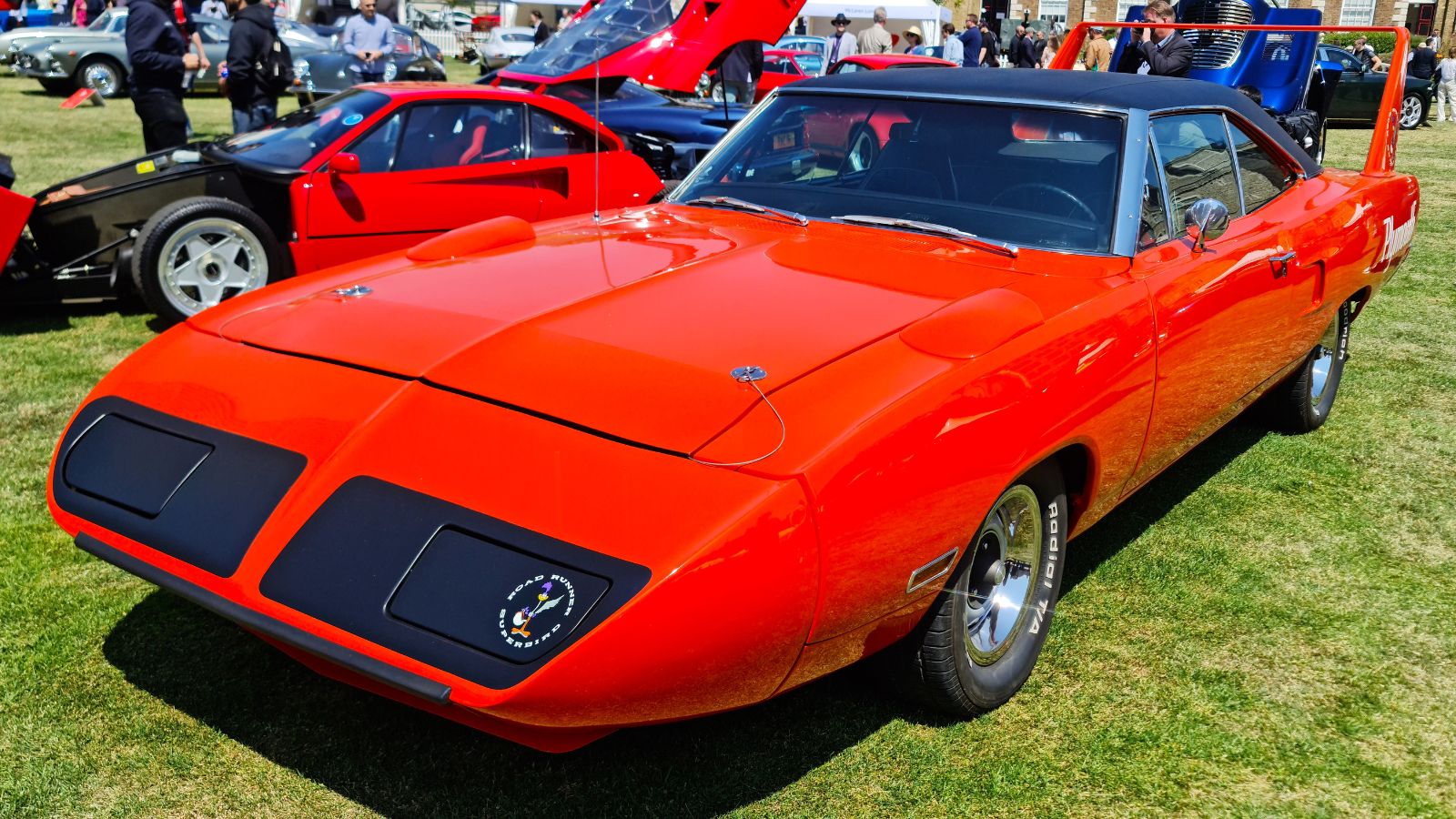
Richard Petty made the Plymouth Superbird a legend. Like the Daytona, it was designed purely for aerodynamic advantage. With its pointed nose and towering rear wing, it looked outrageous but performed brilliantly, racking up NASCAR victories in 1970. Petty’s success behind the wheel made it one of the most iconic muscle cars to ever grace a track. In Canada, its wild looks alone drew fans, but its NASCAR domination cemented it as one of Plymouth’s greatest creations.
Pontiac Firebird Trans Am
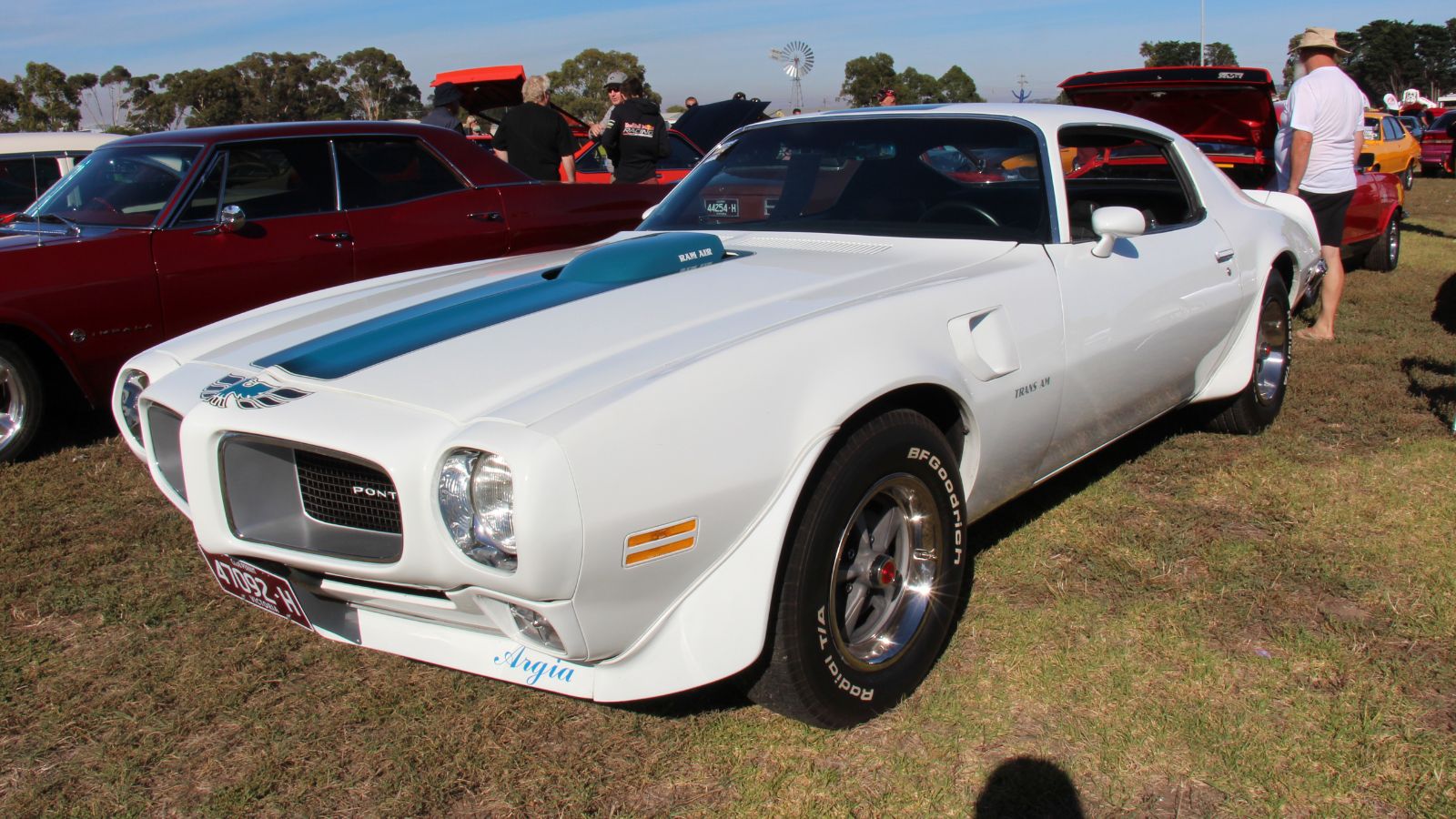
The Pontiac Firebird Trans Am carried the name of the very series it raced in, and it backed it up with genuine performance. While it wasn’t as dominant as the Camaro or Mustang in Trans Am racing, Pontiac made its mark with cars that combined muscle with handling upgrades. The Trans Am’s presence in racing helped it build its legendary street image, and its iconic styling became a symbol of American performance throughout the 70s.
AMC Javelin AMX
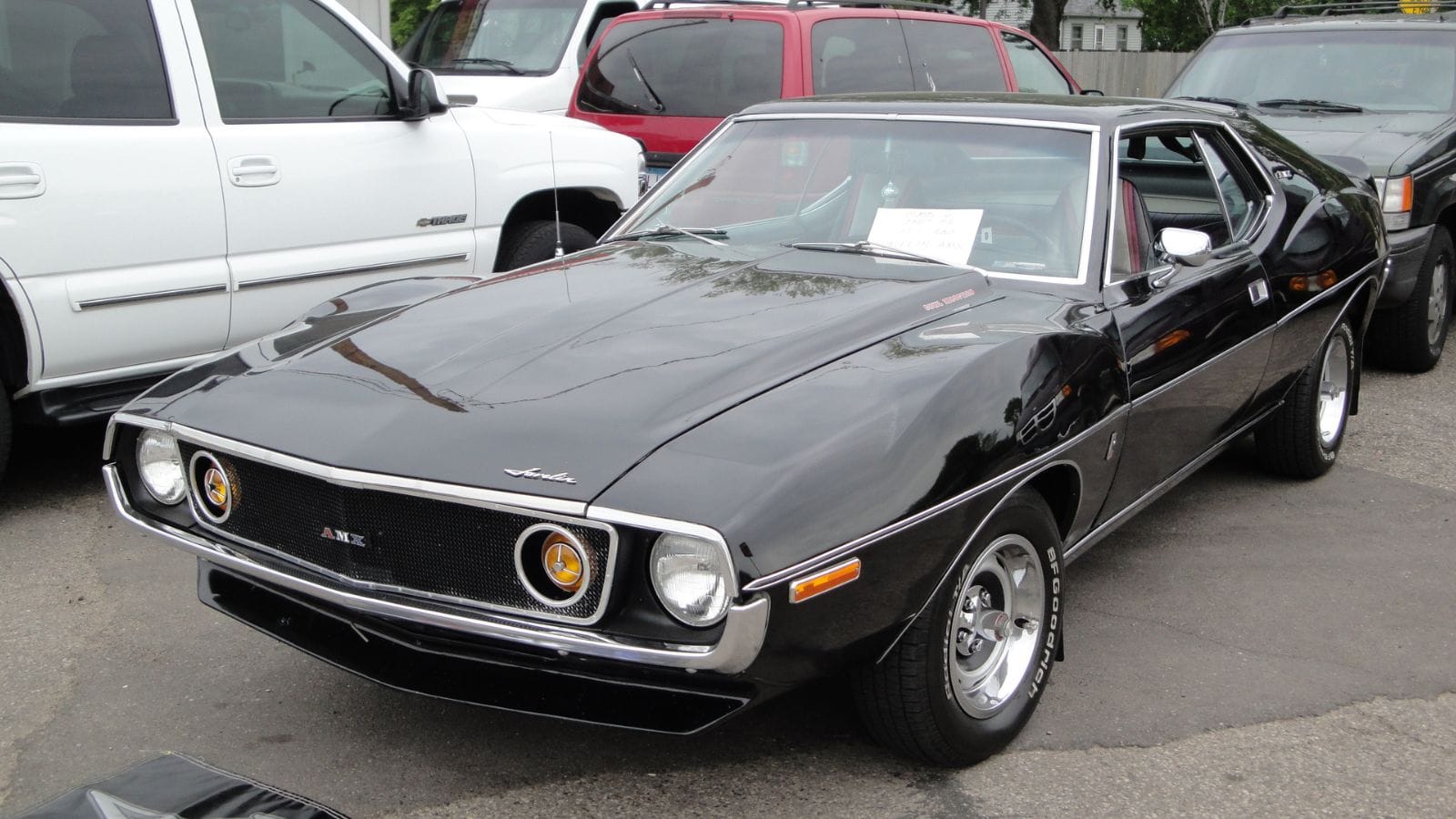
AMC was a small company compared to Ford, GM, and Chrysler, but in the Trans Am series it became a giant killer. With Roger Penske and Mark Donohue at the helm, the Javelin AMX won back to back championships in 1971 and 1972. Its underdog story made it a fan favorite, proving that even the smallest Detroit automaker could build a track winner. Canadians admired AMC’s scrappy success, and the Javelin’s championships remain high points in muscle car racing history.
Mercury Cougar XR7 Trans Am Racer
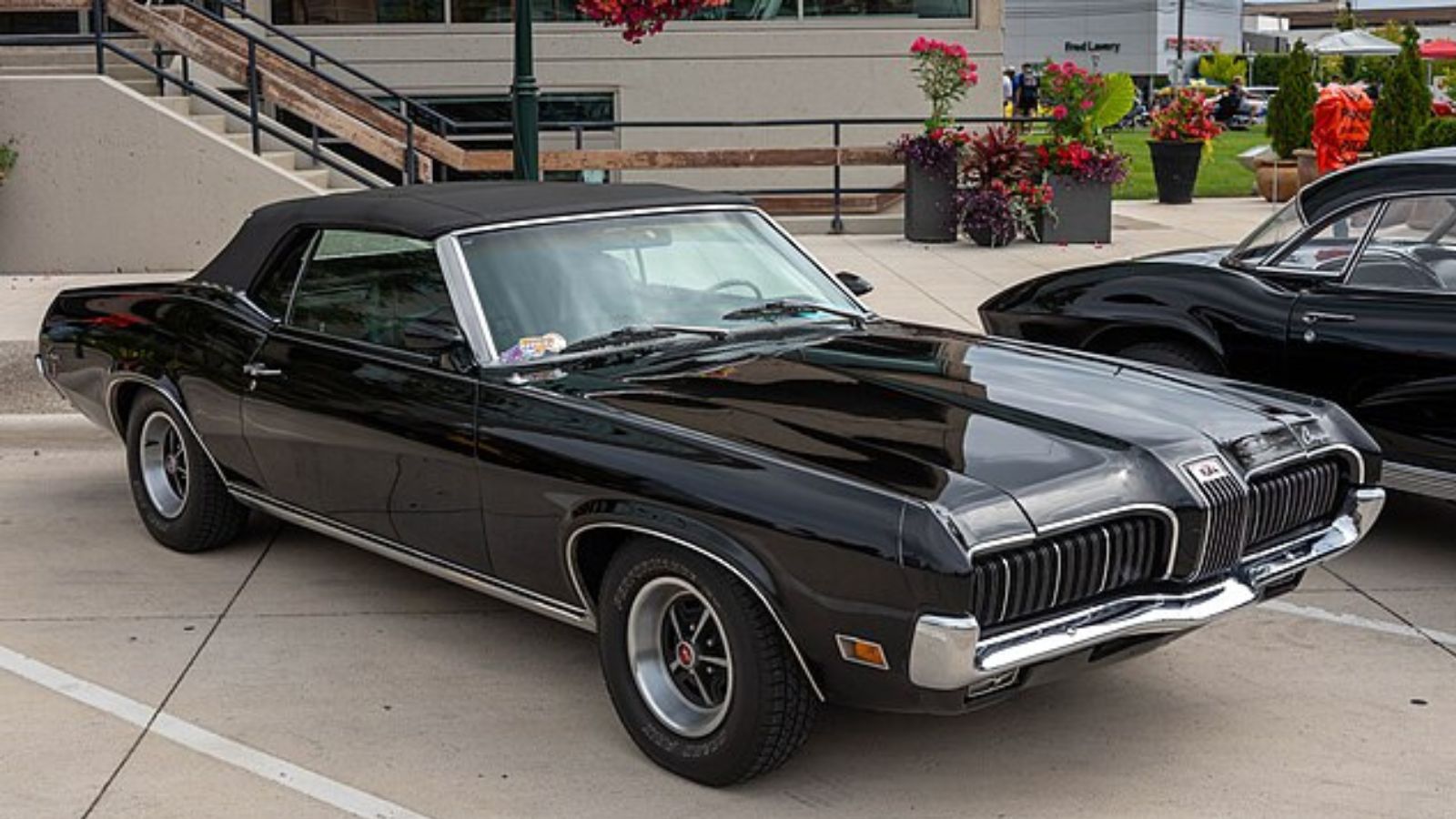
The Cougar XR7 may be remembered as a luxury pony car, but on the track it was a different beast. Bud Moore’s racing team fielded Cougars in Trans Am in the late 1960s, scoring podiums and proving Mercury could mix it with the best. While it never quite achieved the fame of the Mustang or Camaro, it gave Mercury a credible racing pedigree and remains one of the brand’s coolest hidden gems.
Buick GSX Stage 1
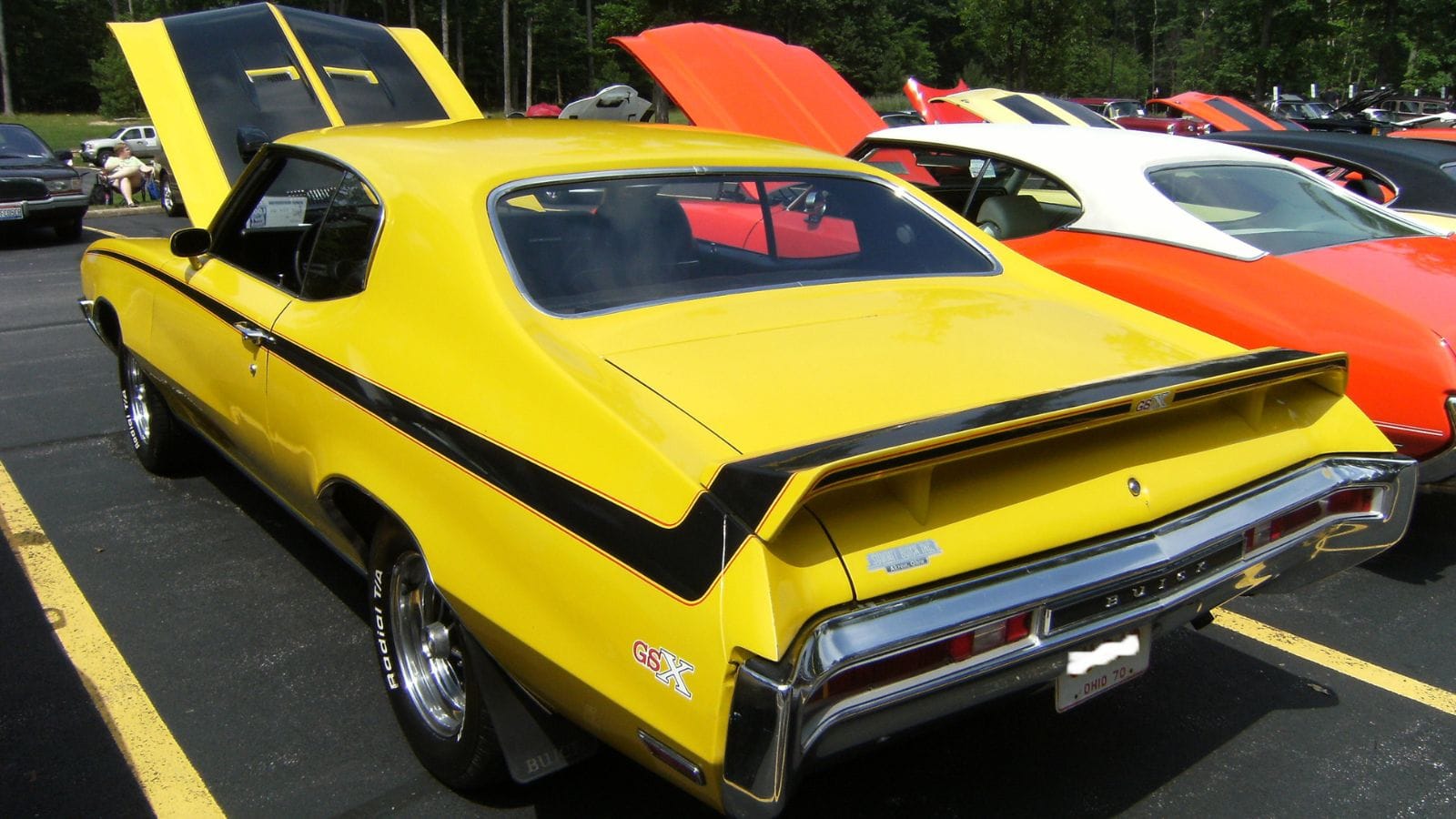
Buick is rarely mentioned in racing circles, but the GSX Stage 1 earned respect in stock based classes and drag racing. Its 455 cubic inch V8 was a torque monster, and in the right hands it was more than competitive. While Buick never pursued factory racing glory as aggressively as others, the GSX showed up on strips and tracks and earned a reputation as a surprisingly capable performer, adding real depth to its muscle car legacy.
Ford Torino Talladega
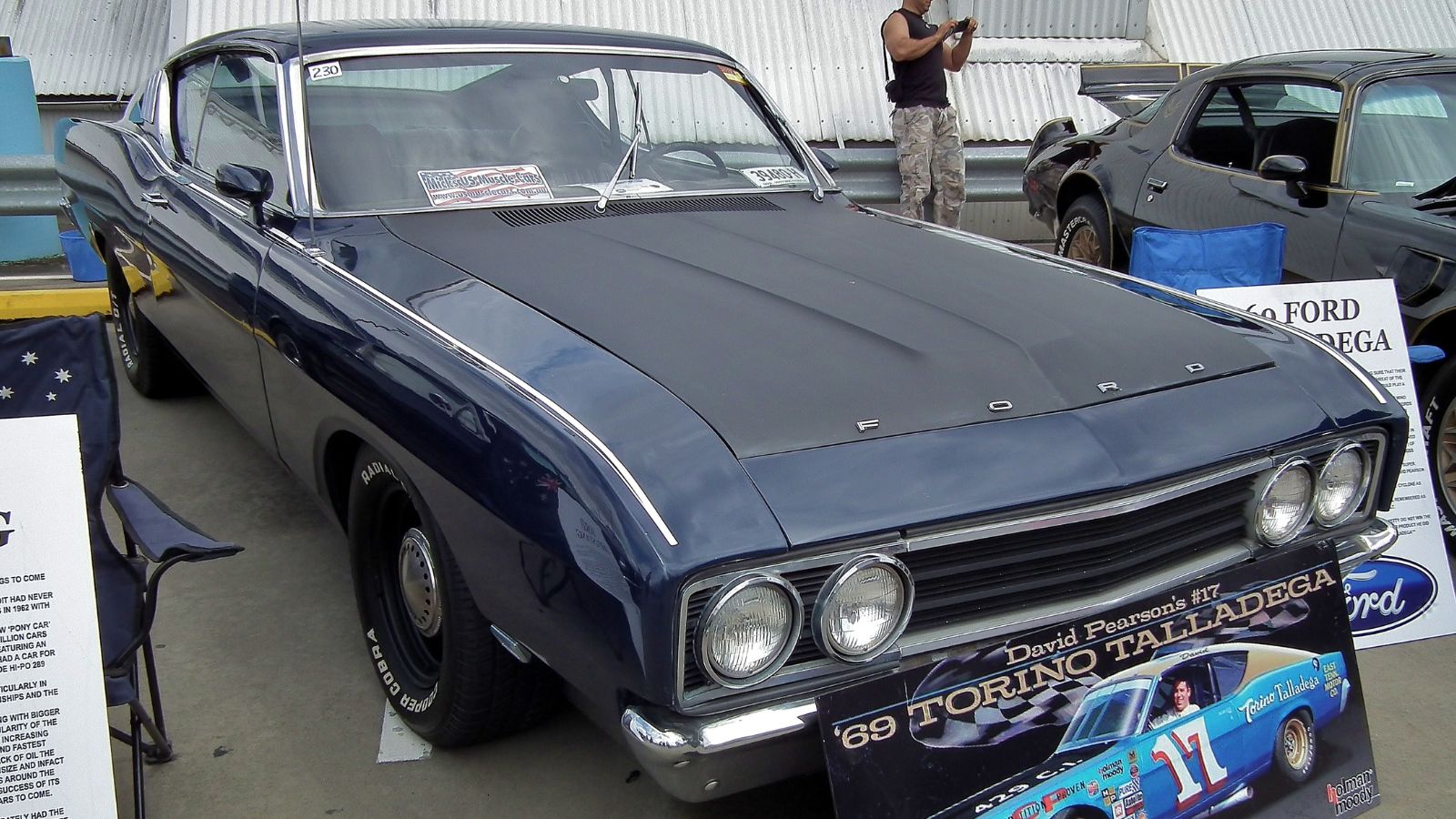
Ford entered the aero wars with the Torino Talladega, a slicked out version of its intermediate muscle car designed purely for NASCAR. With its smooth nose and big block power, the Talladega was virtually unbeatable in 1969. David Pearson piloted it to multiple wins, and Ford walked away with the manufacturer’s championship. For Canadian NASCAR fans who tuned into American broadcasts, the Torino Talladega represented Ford’s engineering might at its best.
Oldsmobile 442 W-30
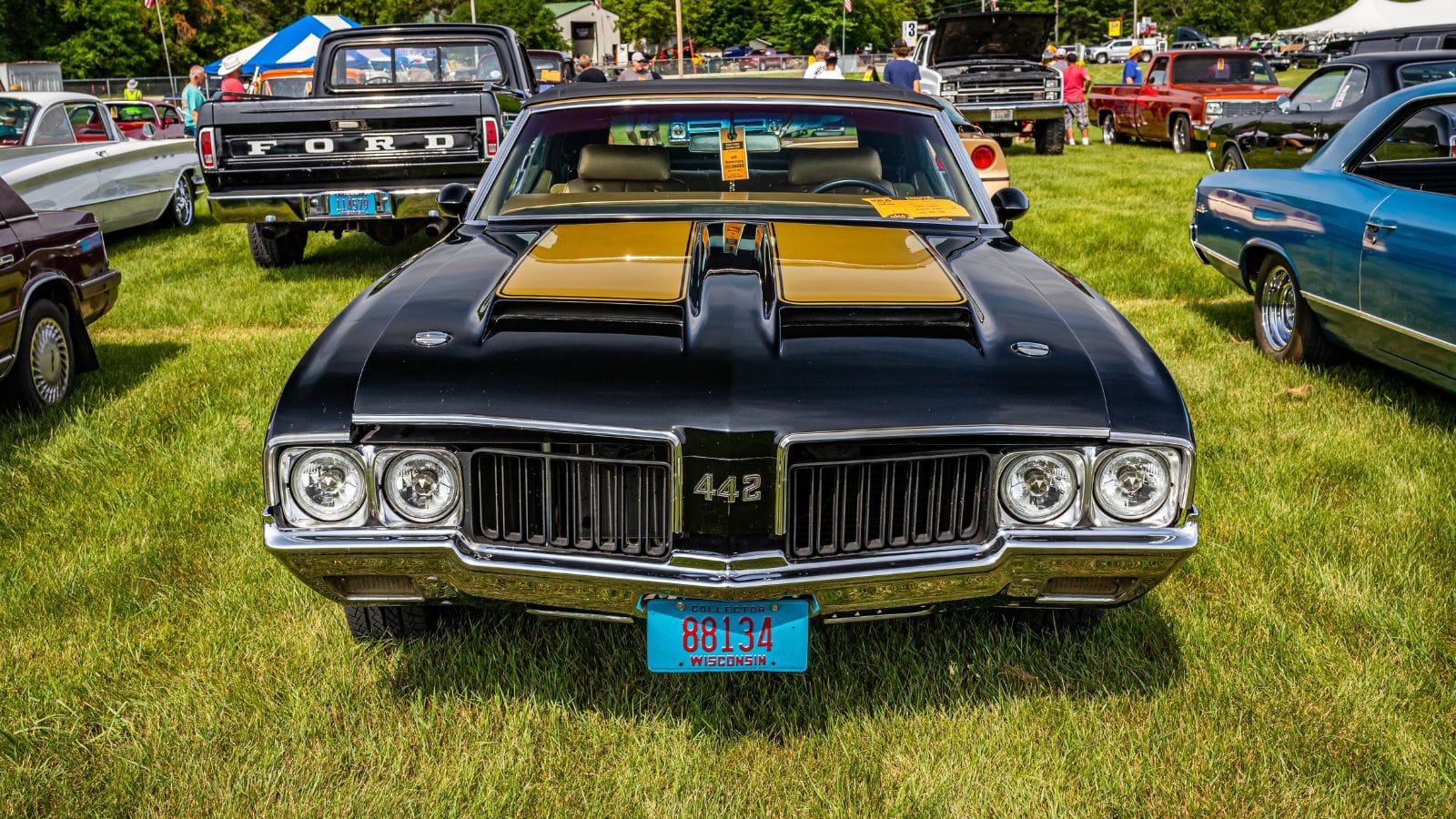
Oldsmobile’s 442 had a reputation for style and comfort, but in W-30 trim it became a formidable racer. With ram air induction, lightweight components, and a stout drivetrain, the 442 proved its worth in drag racing and stock classes. Oldsmobile’s participation in racing may not have been as publicized as Ford or Chevy, but the 442’s capabilities earned it credibility among racers who demanded more than looks.
Chevrolet Chevelle SS 454
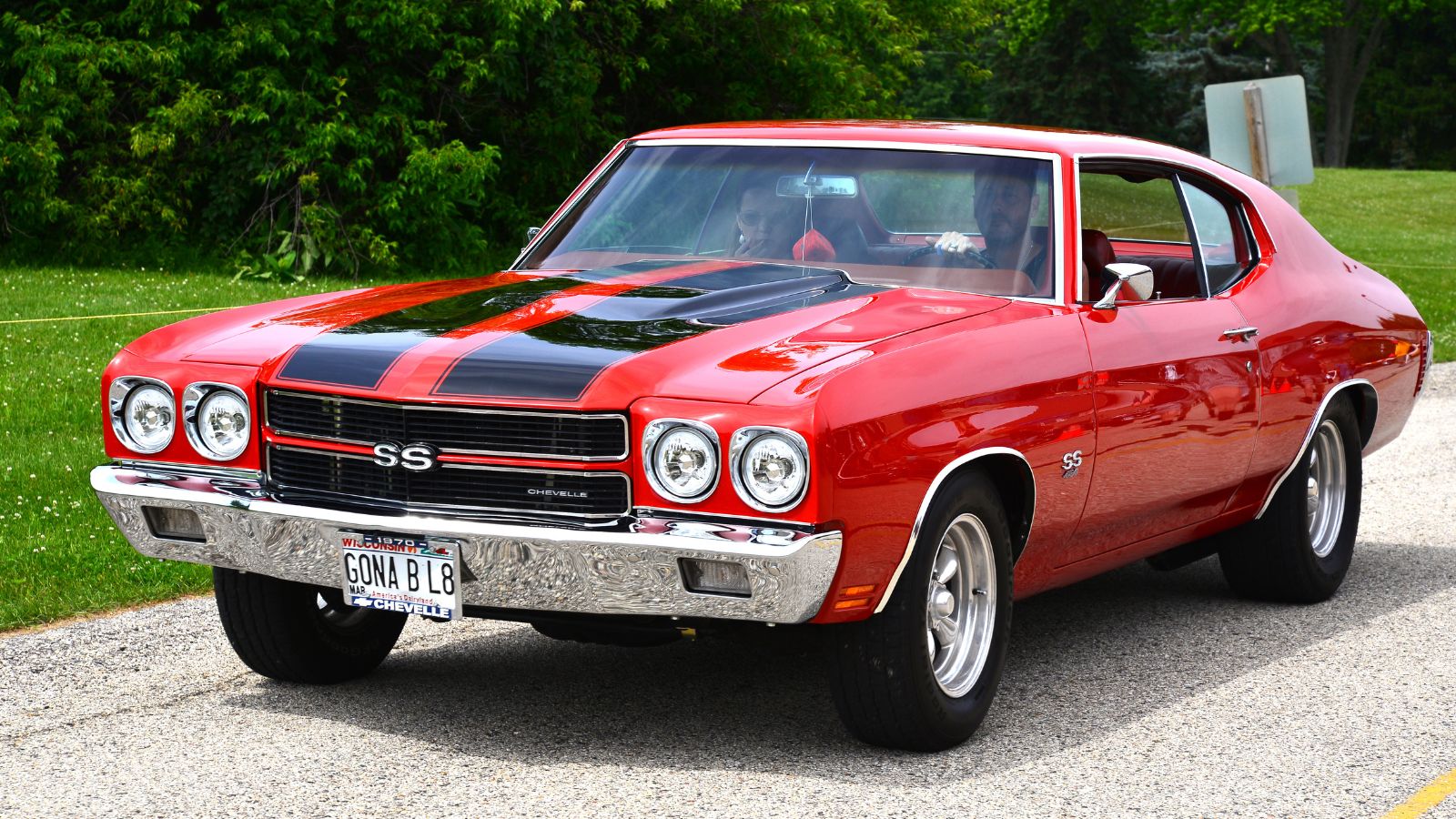
The Chevelle SS 454, especially with the LS6 engine, was a quarter mile legend. In NHRA Super Stock it was one of the dominant machines of the early 1970s, setting records and striking fear into rivals. Its big block power made it a handful on the street but a weapon at the strip. Canadian drag racers who got their hands on a Chevelle SS 454 knew they had something special, a machine built to win trophies.
Dodge Challenger T/A
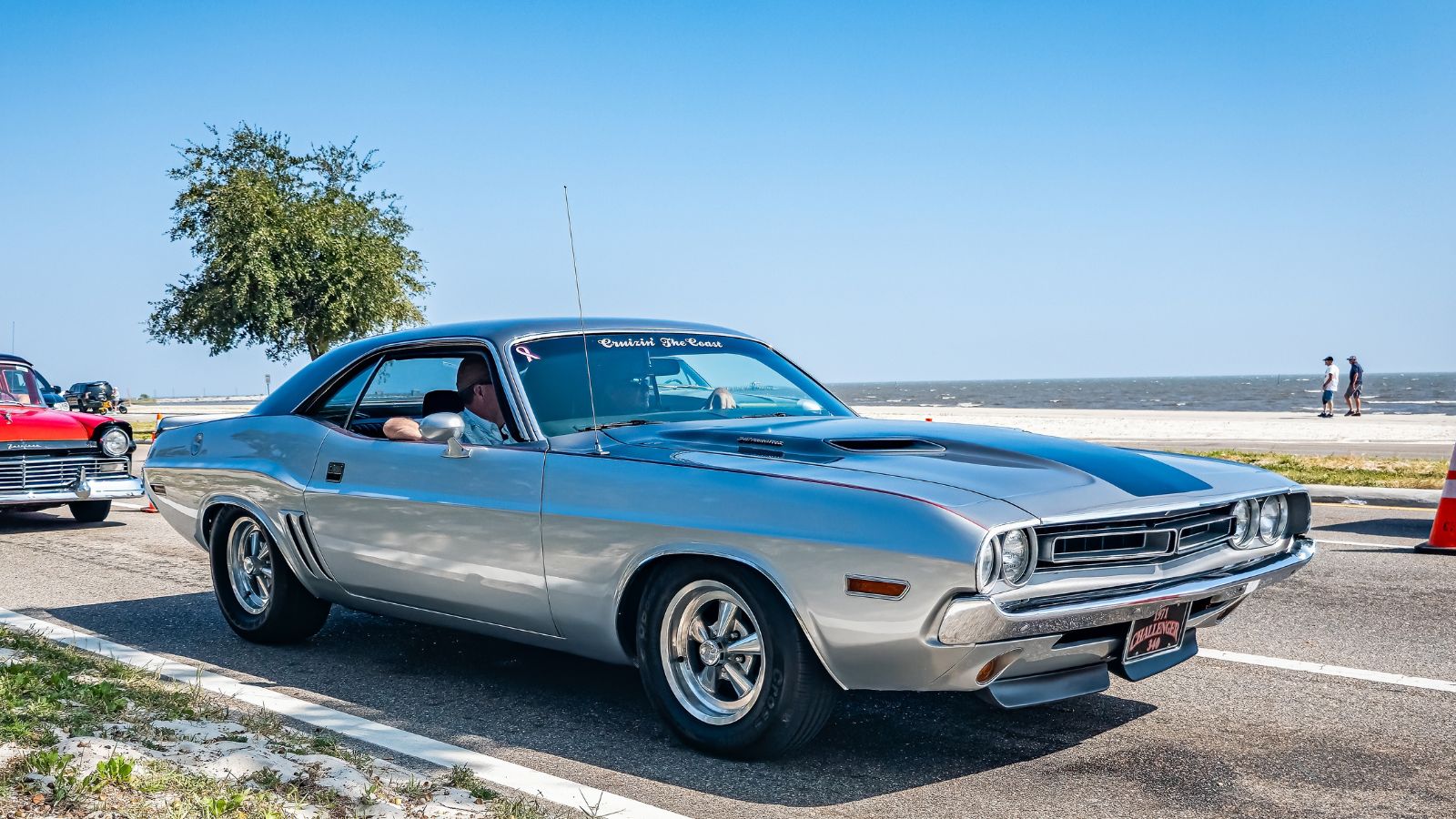
The Challenger T/A was Dodge’s Trans Am homologation special, built to compete with Mustangs, Camaros, and Javelins in 1970. With its 340 Six Pack V8 and suspension tuned for corners, it was a genuine track contender. While it didn’t rack up as many wins as rivals, its presence in Trans Am gave Dodge muscle cars credibility beyond drag strips, and its look became iconic for enthusiasts.
Plymouth AAR Cuda
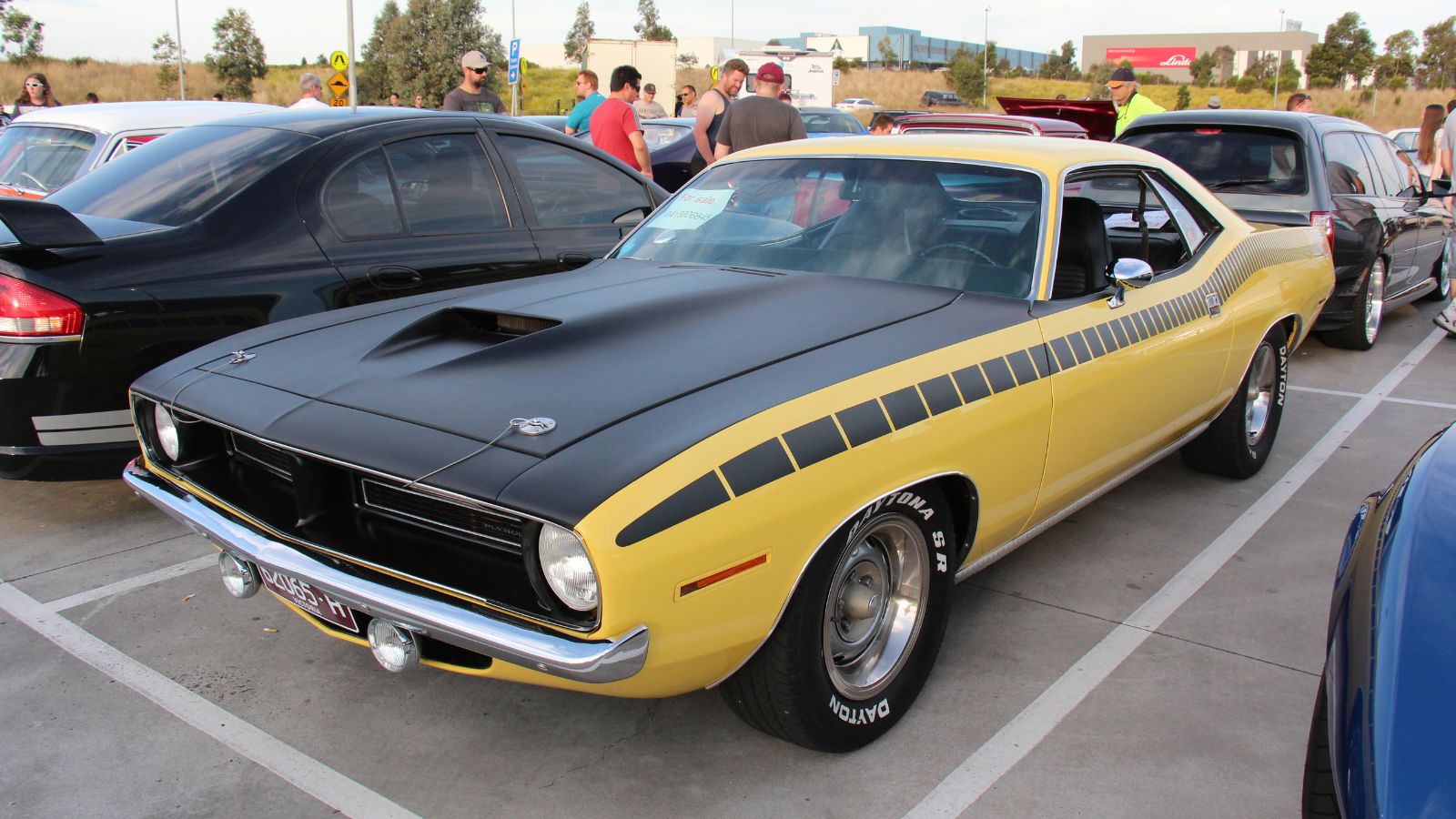
The Plymouth AAR Cuda was the sibling to the Challenger T/A, fielded by Dan Gurney’s All American Racers team. With its small block 340 and aggressive styling, it looked the part and sounded ferocious. Though it struggled against more developed rivals, its involvement in Trans Am added to Plymouth’s reputation and gave fans another reason to cheer. Today, AAR Cudas are prized by collectors as rare examples of factory backed race machines.
Pontiac GTO Judge
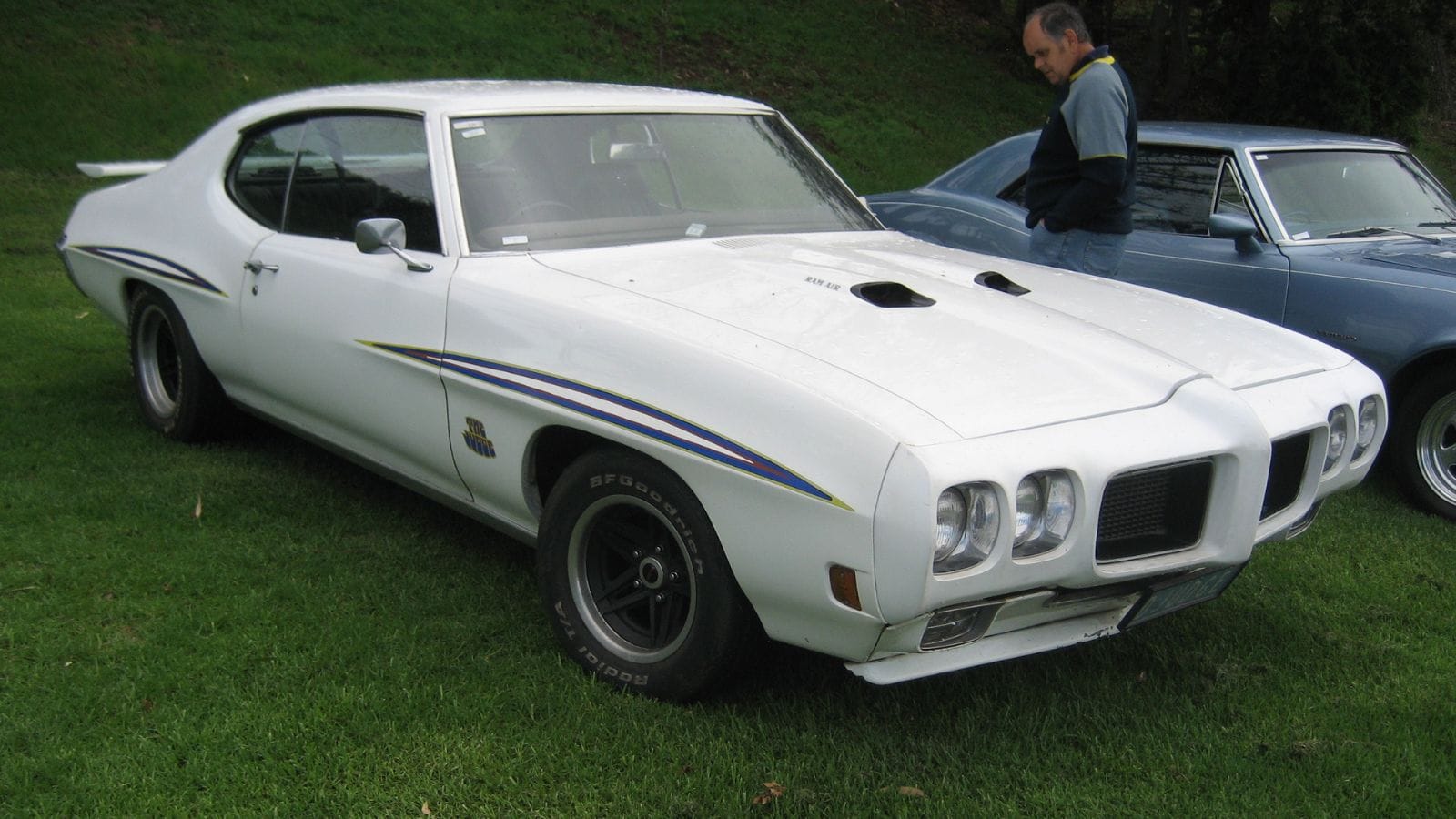
The GTO Judge was often associated with straight line dominance, but it also made its mark in racing. Campaigned in drag racing and even endurance formats, the Judge proved that Pontiac’s muscle could be tuned to compete. While it never became a championship leader like some rivals, its versatility across disciplines added to its aura and helped build the mythos of the GTO.
Ford Falcon XC Cobra
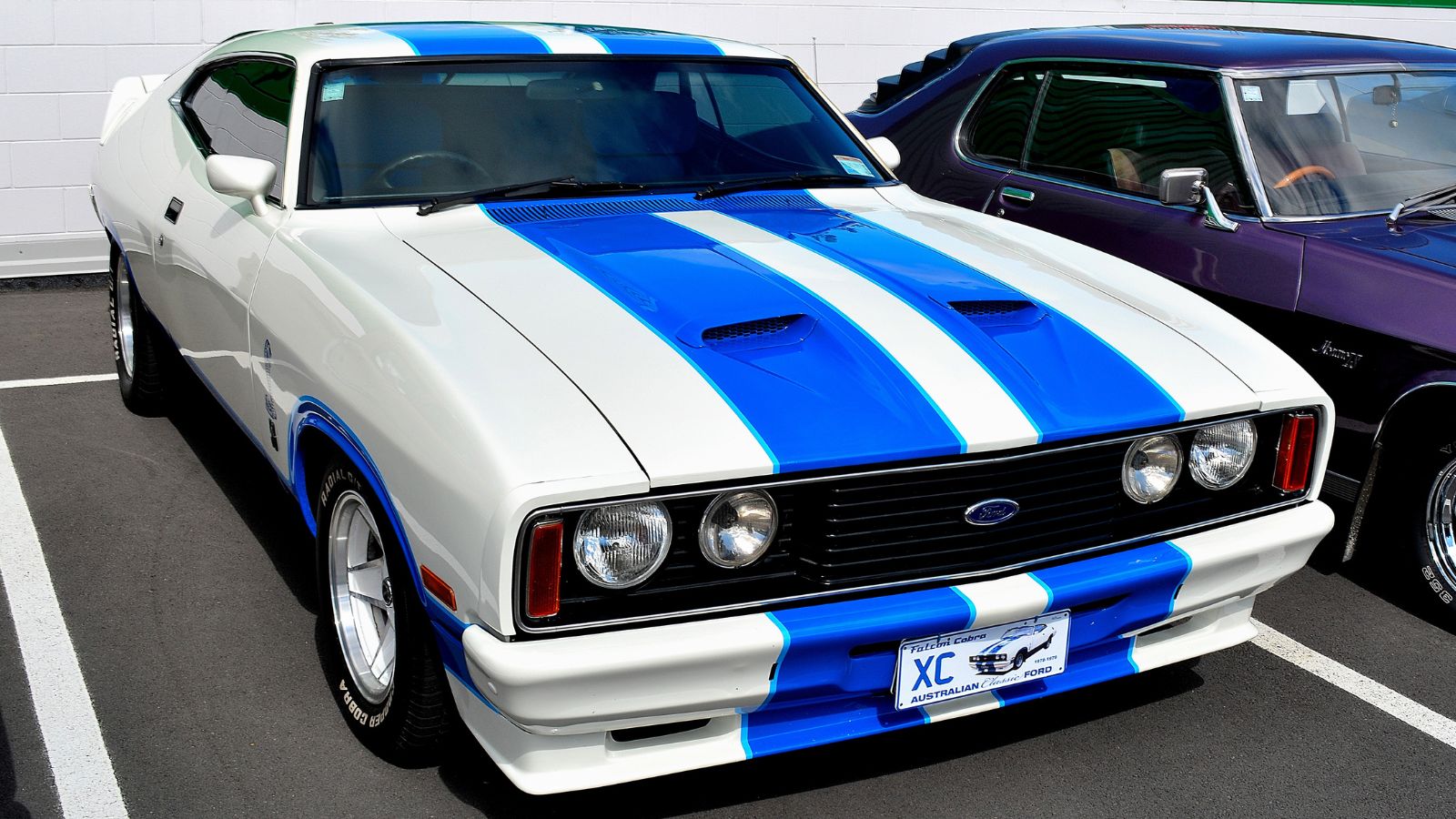
An Australian entry that deserves recognition, the Falcon XC Cobra became a legend in endurance racing. It dominated the Bathurst 1000 in 1977, with Allan Moffat leading a famous 1-2 finish. Though not a Canadian or American muscle car in the strictest sense, it was embraced by fans who followed international racing. Its mix of muscle and endurance success makes it a true racing icon.
Chevrolet Monte Carlo SS
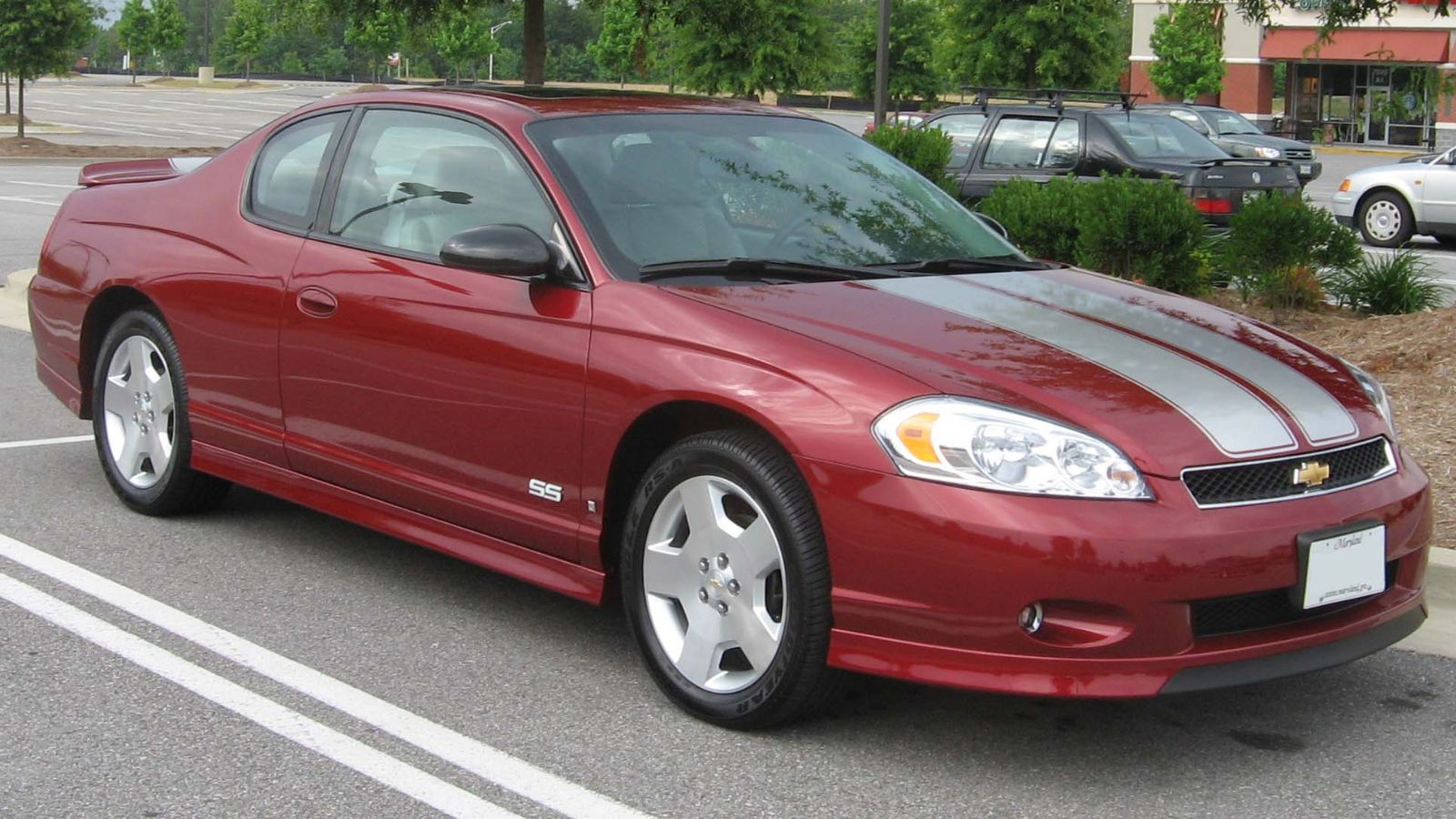
The Monte Carlo SS began life as a personal luxury coupe, but in NASCAR it became a powerhouse. Through the late 70s and 80s, Monte Carlo SS models were consistently competitive, winning multiple championships and keeping Chevrolet in the spotlight. Its long hood and aerodynamic design made it perfect for oval racing, and fans in Canada knew it as the Chevy that dominated the big tracks.
Mercury Cyclone Spoiler II
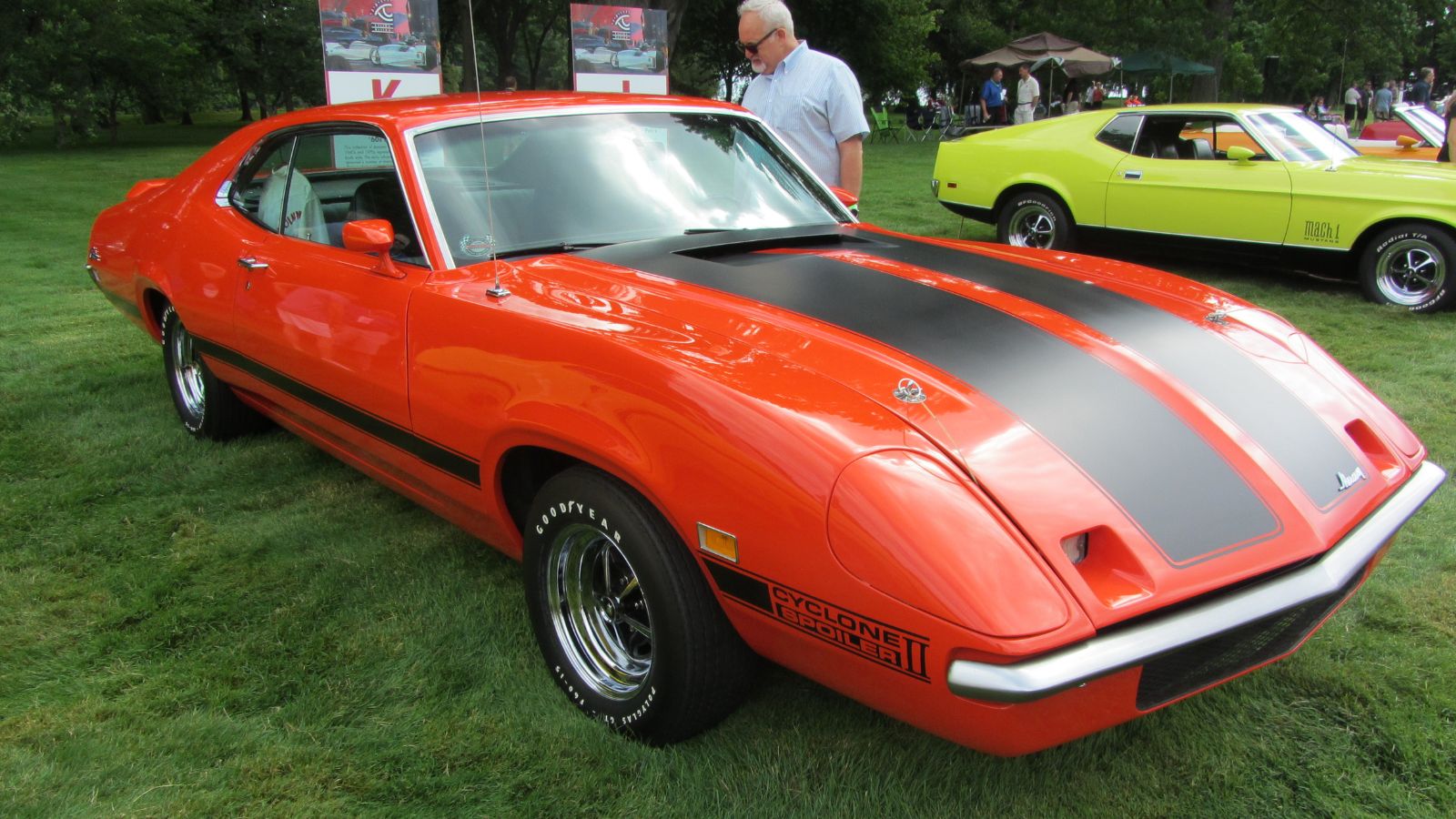
Mercury joined the aero wars with the Cyclone Spoiler II, a car that combined sleek aerodynamics with Ford’s big block engines. Though production numbers were small, its racing success in NASCAR proved it was more than a gimmick. Drivers like Cale Yarborough put it to good use, adding a rare feather in Mercury’s cap for track dominance.
Dodge Dart HEMI
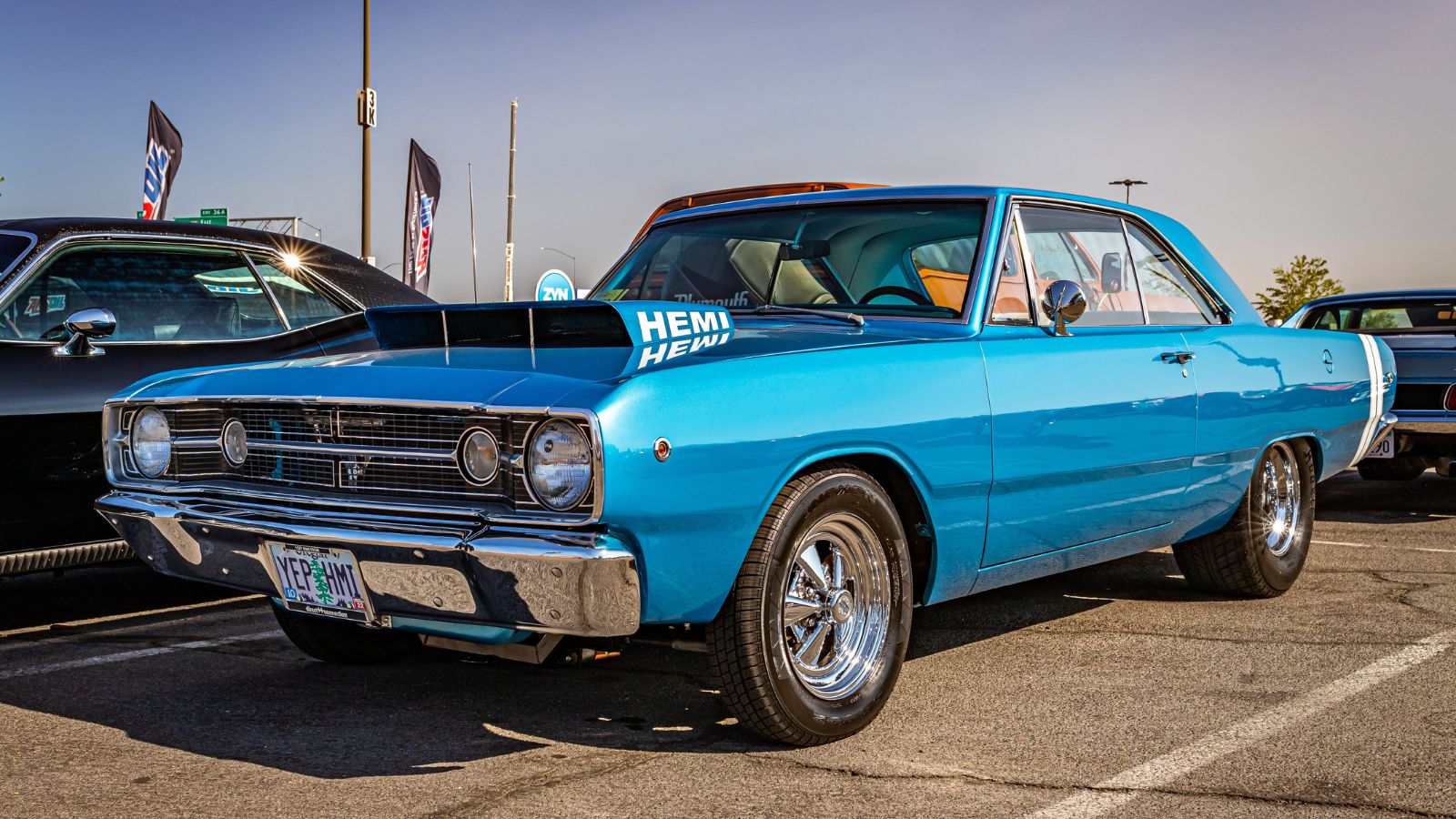
The Dodge Dart HEMI was built specifically for NHRA Super Stock racing. Stripped down and loaded with a monstrous HEMI engine, it was a terror at the drag strip. Lightweight and brutally powerful, it left a legacy that still echoes in vintage drag racing circles today. Canadian drag racers admired it as one of the most purpose built machines Chrysler ever created.
Chevrolet Nova SS
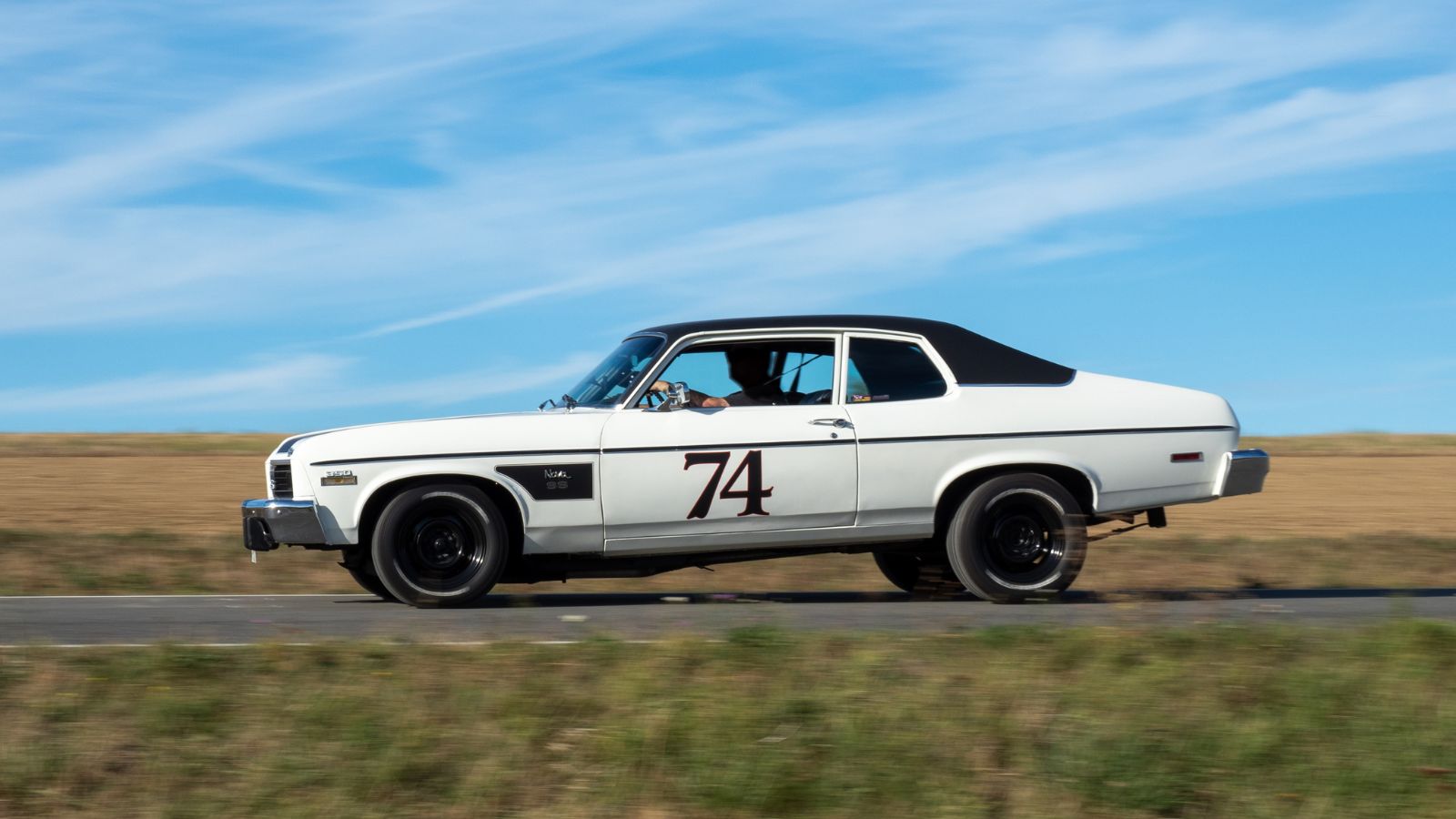
The Nova SS, smaller and lighter than many muscle cars, became a drag racing favorite. With big block power under the hood, it combined light weight with serious horsepower to create a winner in NHRA classes. It also found success in local stock car racing thanks to its nimble size. Canadian racers embraced the Nova SS as one of the most practical ways to go fast on a budget.
Ford Mustang Shelby GT350R
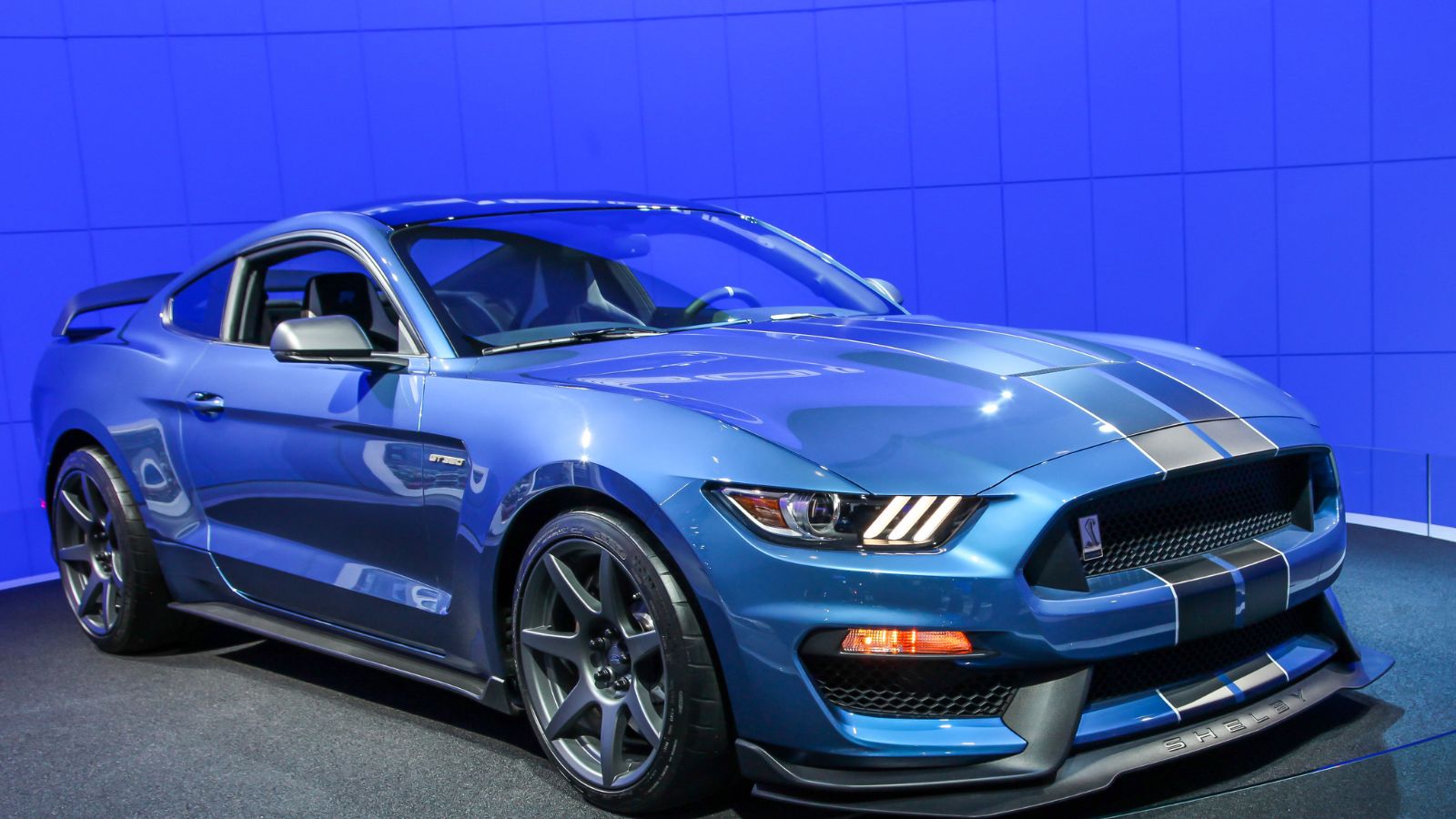
Carroll Shelby’s GT350R was one of the first Mustangs to prove itself on a road course. In the mid 1960s it dominated SCCA racing, creating a foundation for Ford’s later success with the Boss 302. Its stripped down interior, race tuned suspension, and high performance V8 made it a true track weapon. Even though it predates the 70s muscle car boom, its influence carried directly into the era and cemented the Mustang as a serious competitor.
More than a Drag Queen
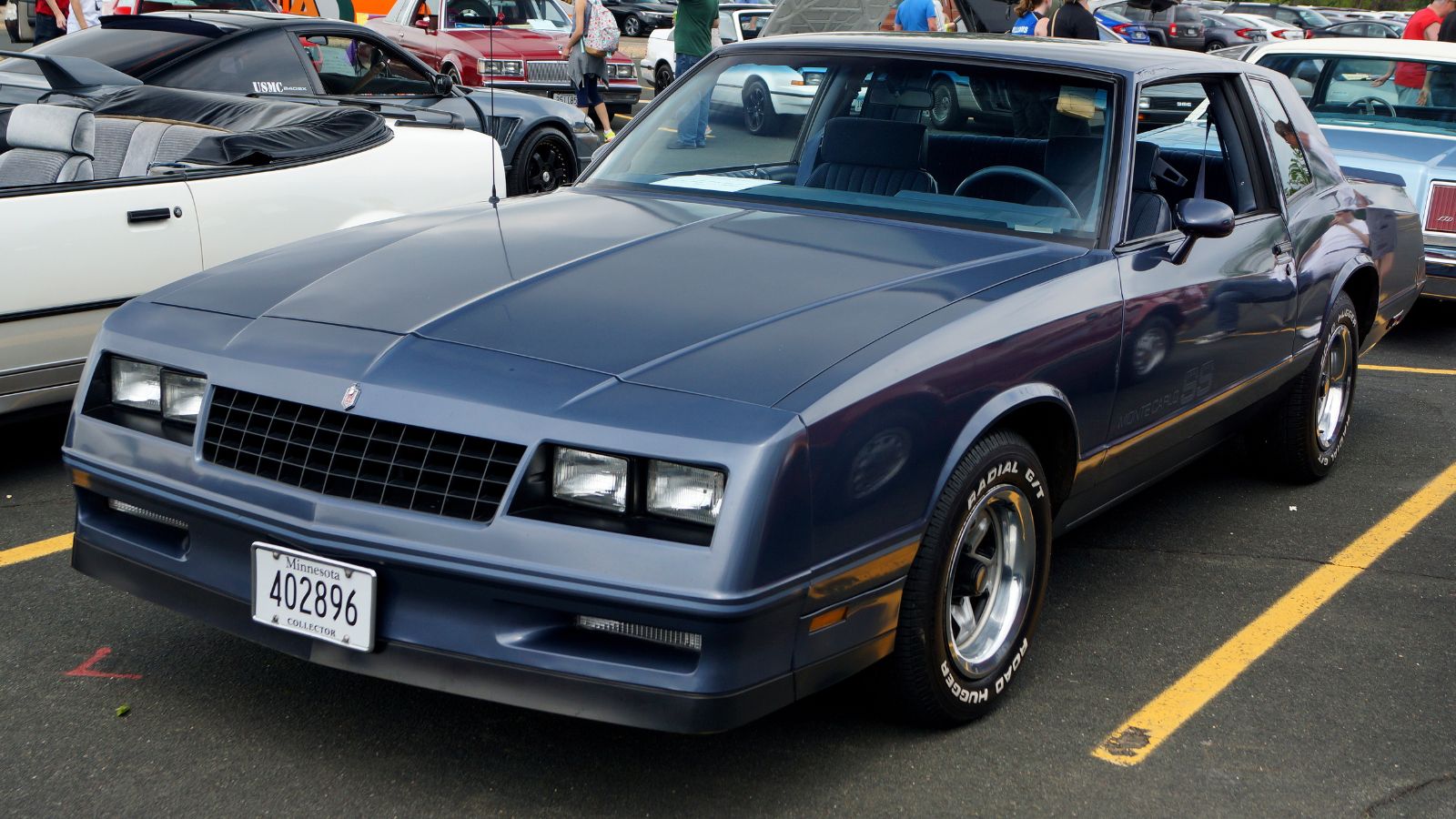
These muscle cars showed the world that Detroit iron could do more than just win drag races. They captured championships, set records, and stood toe to toe with some of the best racers in the world. For Canadian fans who followed NASCAR broadcasts, read about Trans Am in magazines, or raced at their local drag strips, these cars weren’t just machines they were proof that muscle could mean more than brute force. They were fast, fierce, and winners where it counted most, on the race track.
25 Facts About Car Loans That Most Drivers Don’t Realize

Car loans are one of the most common ways people fund car purchases. Like any other kind of loan, car loans can have certain features that can be regarded as an advantage or a disadvantage to the borrower. Understanding all essential facts about car loans and how they work to ensure that you get the best deal for your financial situation is essential. Here are 25 shocking facts about car loans that most drivers don’t realize:
25 Facts About Car Loans That Most Drivers Don’t Realize
